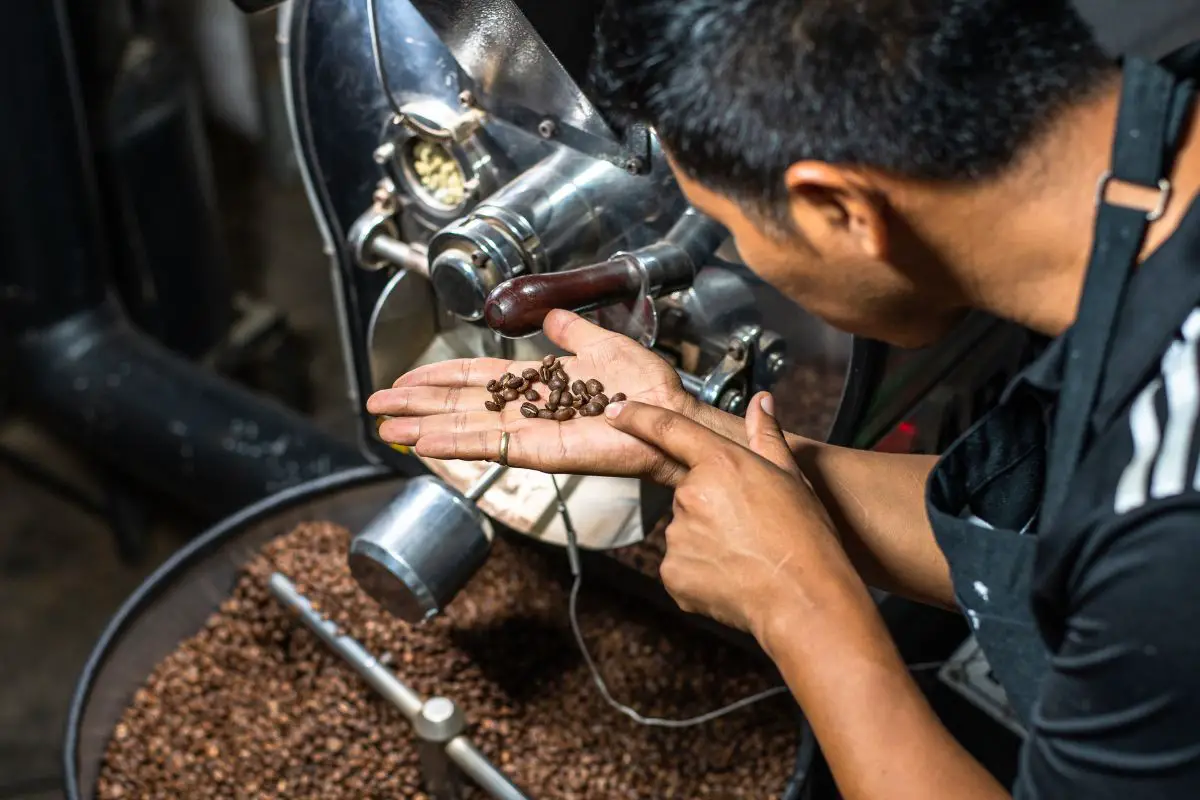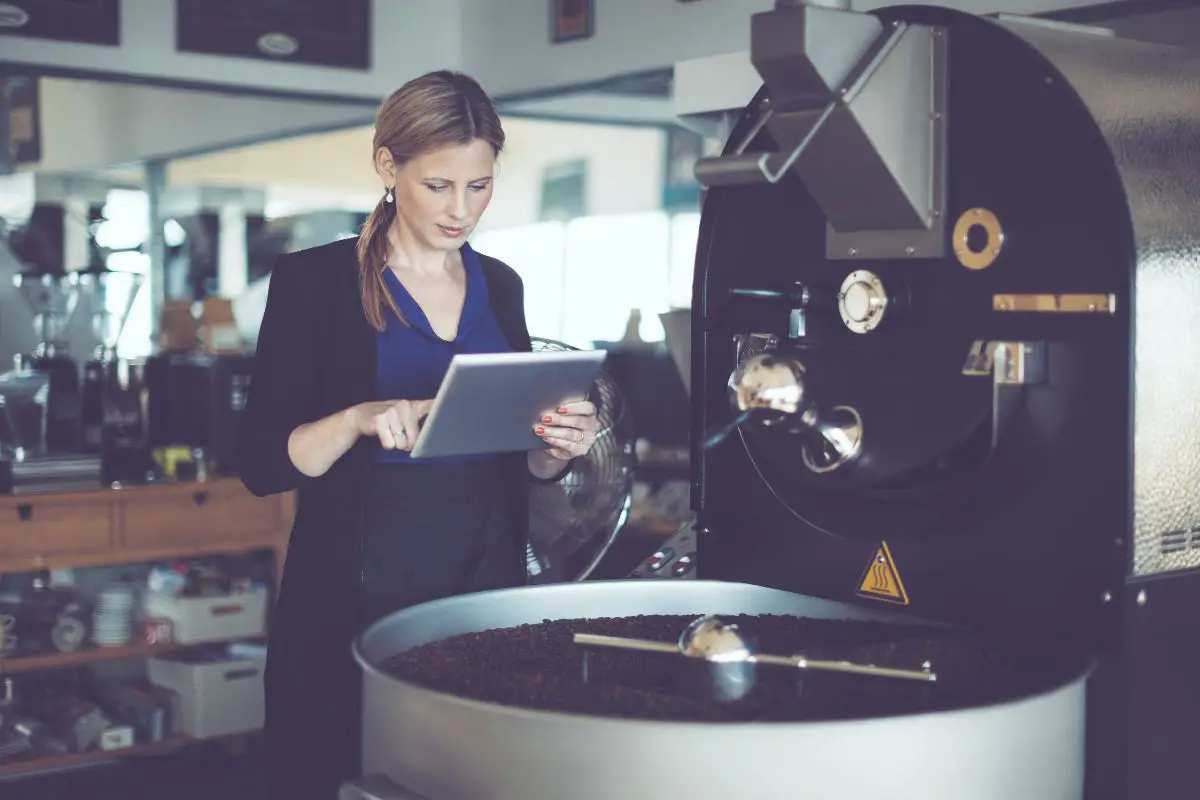In this article, readers will explore the transformation of the global coffee industry from its earliest origins to modern times. Topics covered include the traditional cultivation and production methods before the 20th century, the technological innovations that revolutionized the industry, scientific advances in plant biology and disease control, industrialization of coffee packaging and distribution, and the impact of modernization on both producers and consumers. Additionally, the article highlights the evolution of coffee culture and the rise of specialty coffee and environmental concerns that shape the industry today.

Background of Coffee Production Prior to the 20th Century
Earliest origins of coffee cultivation and preparation
The history of coffee can be traced back to the 9th century, with its origins in Ethiopia, where the plant was first discovered. Coffee’s journey began when Kaldi, an Ethiopian goat herder, observed that his goats became energetic after consuming the berries from a certain plant. When he shared this discovery with the local monastery, they used the berries to create a stimulating concoction that later became widely known as coffee.
By the 15th century, coffee spread to the Arabian Peninsula, and coffeehouses became popular social hubs in Arabia for conversation, music, and the exchange of ideas. These coffeehouses were called qahveh khaneh, where people not only drank the caffeinated beverage but also discussed politics, philosophy, and the arts. This was the beginning of the centuries-long relationship between coffee and intellectualism.
The 16th century saw coffee spread to other regions, such as Egypt, Iran, Turkey, and Northern Africa, while the first European coffeehouse opened in Venice in 1645. The rapid expansion of coffeehouses across Europe eventually resulted in coffee taking over as the preferred beverage, previously held by alcoholic drinks, due to the sobering effect and the potential to discuss thought-provoking ideas in a more lucid state.
Major coffee-producing regions before modernization
Coffee cultivation and production became increasingly important for global trade, which led to its cultivation in various regions across the world. Some of the major coffee-producing regions before the 20th century included Yemen, the Arabian Peninsula, and Ethiopia in the initial stages.
As coffee’s popularity grew, European nations began to introduce coffee cultivation in their colonies, leading to the establishment of coffee plantations in regions such as the Caribbean, South America, Central America, and Asia. The Dutch East India Company played a significant role in expanding coffee cultivation to the Dutch East Indies, such as Java and Sumatra, in the late 17th century.
Brazil, which is currently the largest coffee producer globally, began its journey to prominence in coffee production in the early 18th century. Around the mid-19th century, Central American countries like Costa Rica, Guatemala, and Honduras expanded their coffee cultivation, which led to coffee becoming one of their primary export commodities.
Traditional coffee production techniques and limitations
Traditional coffee production consisted of various stages, including harvesting, processing, and roasting. Harvesting was done manually, with workers picking the ripe coffee cherries by hand, which was labor-intensive and time-consuming. While this method offered better quality control, it limited the overall production scale due to its slow nature.
Coffee processing had two primary methods: dry and wet processes. The dry process involved laying the coffee cherries out in the sun to dry for several weeks, followed by hulling to remove the outer layer. This method was low-cost and easy to implement, but it was vulnerable to weather uncertainties and resulted in inconsistent quality. The wet process involved removing the outer layer through fermentation and washing, which gave a more consistent quality but required a significant amount of water and had a more complex, labor-intensive process.
Roasting, which is a crucial step in coffee production, was traditionally done over an open flame or in large, rotating drums. This method of roasting allowed for a limited control, leading to disparities in flavor and quality consistency. Additionally, the traditional methods of cultivation and production lacked technical innovation and environmentally sustainable practices, which often led to lower yields and higher production costs.
Technological Innovations in Coffee Production
The coffee industry has seen significant technological advancements in recent years, changing the way coffee is grown, harvested, processed, and distributed worldwide. These innovations have led to improved efficiency, higher quality products, and more sustainable practices in coffee production. In this article, we will explore some of the key technological advancements that have revolutionized coffee production.
Mechanical harvesters
Traditionally, coffee has been picked by hand, which is a slow and labor-intensive process. However, advancements in harvesting technology have introduced mechanical harvesters as an alternative to manual labor. Mechanical harvesters are machines that can quickly and efficiently pick coffee cherries from the tree, significantly reducing the time and workforce needed to complete the harvest.
There are several types of mechanical harvesters, but they typically work by shaking the coffee tree, causing the ripe cherries to fall into collection trays. While these machines have been a game-changer in terms of increasing productivity and reducing labor costs, there is still some debate about their impact on the quality of the harvested beans. Mechanical harvesting can sometimes lead to higher levels of unripe or defective cherries being picked, which can impact the final product’s taste.
To combat this issue, researchers and manufacturers are continually improving mechanical harvester technology. For example, some designs now include optical sensors that can detect and separate unripe cherries from the ripe ones. Overall, these machines have been instrumental in increasing the global supply of coffee and reducing the industry’s reliance on manual labor.
Automated sorting and processing equipment
After harvesting, coffee beans must be processed to remove the fruit pulp and sorted to separate high-quality beans from low-quality ones. Advances in automation have introduced machines that can do this work far more efficiently than humans. Automated sorting equipment uses sensors, conveyor belts, and other technologies to analyze, grade, and separate the beans based on key factors such as size, density, and color.
Additionally, automation has allowed for improved processing techniques in the removal of the fruit pulp from coffee cherries. Machines can now remove the pulp with greater precision, reducing waste and damage to the beans. Some innovative processing equipment also recycles water, reduces energy consumption, and minimizes the environmental impact of coffee production.
Modernized roasting techniques

Roasting is an essential step in coffee production, as it transforms the raw beans into the aromatic and flavorful product we know and love. Advancements in roasting technology have allowed for more precise control over temperature, airflow, and other variables, resulting in a higher quality final product.
Modern roasters use advanced software and sensors to monitor the beans’ temperature, moisture, and color throughout the roasting process. This allows for precise adjustments to achieve the desired roast level, showcasing each bean’s distinctive flavor profile. It has also opened up opportunities for innovative roasting methods, such as “flash roasting,” which uses rapid, high-temperature heating to achieve a uniform roast in a fraction of the time of traditional methods.
Quality control and grading technologies
Ensuring consistent quality is a top priority in the coffee industry. Innovations in quality control and grading technology have made it easier to maintain high standards and provide consumers with the best possible product. Advanced optical sorting machines can analyze coffee beans based on their color, shape, and size, accurately sorting them into different quality grades.
Moreover, digital imaging systems and specialized software can now detect defects in coffee beans at high speed and with incredible accuracy. This technology can identify beans with issues such as insect damage or mold, ensuring that only the highest quality beans make it to the final stage of production.
In addition to these technological advancements, there has been a rise in data-driven approaches to coffee production, including the use of drones and remote sensing equipment to monitor crop health and yield. The combination of advanced technology and data analysis has helped foster an environment of continuous improvement, both in terms of efficiency and quality, and promises to continue pushing the coffee industry forward.
Scientific Advances in Coffee Cultivation and Disease Control
Coffee is one of the most widely consumed beverages globally, making coffee cultivation a crucial industry to support the growing demand. Continuous advancements in coffee cultivation and disease control can benefit coffee growers by increasing yields, improving the overall quality of the beans, and ensuring the survival of coffee crops in the face of climate change and pest pressures.
New coffee varieties and hybridization
One of the most significant advancements in coffee cultivation is the development of new coffee varieties through breeding and hybridization programs. These programs aim to create plants that have improved characteristics, such as increased yield, better resistance against diseases, and enhanced adaptability to diverse climatic and environmental conditions.
Scientists have been exploring the genetic diversity of coffee plants and using modern molecular breeding techniques to develop hybrids with favorable traits. This research includes identifying desirable genes in existing coffee varieties and transferring them through cross-breeding. As a result, various hybrids and cultivars have been released with increased tolerance to diseases, pests, and environmental stress.
The development of disease-resistant varieties has been particularly important in combating devastating diseases, such as coffee leaf rust and coffee berry disease. These new coffee varietals provide a more sustainable solution to disease management compared to traditional chemical controls and can improve farmers’ livelihoods by reducing input costs and crop losses.
Furthermore, scientists are also working on developing coffee varieties with improved flavor profiles, caffeine content, and adaptability to different processing methods. This will diversify the options available for coffee processors, ultimately promoting the production of high-quality coffee.
Improved understanding of coffee plant biology and physiology
A better understanding of coffee plant biology and physiology is crucial for the development of advanced cultivation practices. Recent scientific research has explored coffee plant genetics, molecular biology, and biochemical pathways to develop new intervention strategies that can boost coffee production.
One significant breakthrough is the sequencing of the coffee genome, which will enable researchers to identify crucial genes responsible for traits like disease resistance, caffeine content, and bean quality. This knowledge will ultimately allow for the development of more targeted breeding programs and the creation of genetically improved coffee varieties.
Additionally, understanding how coffee plants respond to environmental factors such as light, temperature, water, and nutrients can help develop agricultural practices that promote optimal growth and productivity. For instance, studies on photosynthesis, water use efficiency, and nutrient uptake mechanisms in coffee plants have led to improved fertilization, irrigation, and canopy management practices.
Advancements in pest and disease management
Pest and disease management is a vital aspect of coffee cultivation to prevent crop losses and ensure high-quality bean production. Combining preventative measures, monitoring, and new control techniques have become increasingly essential for sustainable pest and disease management.
Recent advancements include the development of biological control agents, such as bacteria, fungi, and nematodes, that target specific pests or pathogens. These biological approaches are eco-friendly and reduce the need for chemical application, thus reducing the potential harm to the environment, farmers, and consumers.
The use of semiochemicals, such as pheromones, to disrupt pest behavior and mating processes is another innovative pest control method. This technique focuses on population management, reducing the need for pesticides.
Remote sensing and monitoring systems, such as drones and satellite imagery, are also being employed for early pest and disease detection, enabling timely interventions and reducing yield losses.
Adapting to climate change and environmental challenges
Climate change presents significant challenges to coffee cultivation, including rising temperatures, erratic rainfall patterns, and increased incidence of pests and diseases. To adapt to these challenges, scientists have been developing strategies to improve the resiliency of coffee plants and enhance the sustainability of coffee production systems.
Planting climate-resilient coffee varieties, adopting proper shade management practices, and improving soil conservation measures are some of the approaches to minimize the negative impacts of climate change on coffee cultivation. These practices not only help maintain the productivity and quality of coffee but also support biodiversity and ecosystem services such as carbon sequestration and water regulation.
Interdisciplinary research and cooperation among various stakeholders, including coffee growers, researchers, industry representatives, and policymakers, are essential for addressing environmental challenges and promoting sustainable coffee production. This collaborative approach will ensure that the new scientific advancements in coffee cultivation and disease control can be effectively incorporated into practical farming practices, ultimately benefiting the entire coffee value chain.
Industrialization of Coffee Packaging and Distribution

Industrialization has had a significant impact on the coffee packaging and distribution industry. With continuous advancements in materials, transportation, and trading systems, coffee has become easily accessible worldwide. This article will focus on the evolution of packaging materials and methods, the advancements in transportation and logistics, and the development of global coffee trading systems.
Evolution of packaging materials and methods
Over the years, the coffee packaging industry has come a long way from using simple materials such as jute bags to advanced packaging solutions that not only prolong the shelf life of coffee but also maintain its flavor and aroma. The shift to environmentally friendly packaging materials is currently a major focus in the industry.
Traditionally, coffee was packaged in simple jute or cotton bags, which did not extend the shelf life or preserve the quality of the beans. The industry then moved to using paper bags, which provided better protection but still failed to maintain the freshness of the coffee for extended periods.
With the introduction of vacuum-sealed packaging, the coffee industry underwent a significant change. Vacuum-sealed bags use a multilayered film or foil material that removes air from the bag and seals it tight to prevent the intrusion of moisture, light, and air, keeping the coffee fresh for longer periods.
There has also been a shift towards utilizing more environmentally friendly materials for #coffee packaging, such as biodegradable and compostable options. One example is the use of bio-based materials like polylactic acid (PLA), which is derived from cornstarch and is both biodegradable and compostable.
Another innovation in coffee packaging is the introduction of degassing valves. These one-way valves allow excess carbon dioxide to escape from the package without letting in oxygen. Since freshly roasted coffee beans release carbon dioxide, this innovation has become crucial in ensuring that coffee packaging does not burst due to the build-up of gases while maintaining the coffee’s freshness.
Advancements in transportation and logistics
Improvements in transportation and logistics have allowed the coffee industry to expand its global reach and market its products worldwide. As the demand for coffee grew, so did the need for efficient transportation methods to move large quantities of coffee across borders.
The invention of the shipping container revolutionized the coffee transportation process. Standardized sizes allowed for better compatibility between different modes of transportation, such as ships, trains, and trucks, with fewer delays due to loading and unloading. Moreover, containers provided adequate protection against moisture and pests during transit.
Advancements in technology have helped optimize logistics for the coffee industry. Global positioning systems (GPS), electronic data interchange (EDI), and automated tracking systems have allowed for more accurate and timely information exchange between various parties involved in the transportation process. This has, in turn, led to better route planning, reduced transportation costs, and enhanced inventory management.
Development of global coffee trading systems
A key aspect of the industrialization of coffee packaging and distribution is the development of global trading systems that have expanded the coffee market and streamlined international trade.
The establishment of coffee commodities exchanges, such as the New York Coffee Exchange and the London International Financial Futures and Options Exchange (LIFFE), has allowed for the standardization and regulation of coffee trading. These exchanges have also facilitated price discovery and risk management through futures contracts and other financial instruments.
The formation of coffee cooperatives and associations has also contributed to the development of global coffee trading systems. For instance, the International Coffee Organization (ICO) serves as a forum for both exporting and importing countries to discuss and coordinate coffee-related policies and initiatives.
Moreover, advancements in communication technologies, such as the internet and mobile phones, have made real-time communication between traders and producers around the world possible. This has facilitated the development of systems like the electronic coffee auctions, where multiple buyers can bid on coffee lots through online platforms. Such systems have increased transparency, efficiency, and competitiveness in the global coffee market.
In summary, the industrialization of coffee packaging and distribution has resulted in significant advancements in packaging materials and methods, transportation and logistics, and global coffee trading systems. These developments have allowed the coffee industry to grow and meet the increasing global demand for this beloved beverage.
Impact of Modernization on the Coffee Industry
The coffee industry has undergone significant transformations in recent times, thanks to the era of modernization. This period has brought in a multitude of changes, including the emergence of large-scale coffee plantations and companies, shifting socio-economic consequences for small-scale farmers and local communities, and overall economic implications for coffee-producing countries. Understanding these changes is vital to comprehend the landscape of the contemporary coffee industry.
Emergence of large-scale coffee plantations and companies
Modernization has led to the rise of large-scale coffee plantations and multinational coffee companies. The development of modern techniques, technologies, and extensive global distribution networks has allowed these organizations to gain a significant share of the market. The surge of these companies has been possible due to numerous factors such as advanced mechanization, intensive agricultural practices, increased demand for specific blends of coffee, and globalization.
Large coffee plantations tend to have access to better resources, technical expertise, and market access. These plantations also benefit from economies of scale, making it easier for them to invest in research and development, advanced machinery, and better quality control measures. Additionally, these plantation owners can establish long-term contracts with coffee companies, providing them with a steady income and more control over their production processes.
On the other hand, multinational coffee companies have acquired a considerable market share due to their ability to cater to consumer preferences by offering unique blends of coffee, attractive packaging, and engaging marketing strategies. These companies have expanded their presence globally by entering new markets and forming alliances with local coffee producers. Consequently, they have been able to take advantage of economies of scale, leading to reduced production costs and higher profits.
Effects on small-scale coffee farmers and local communities
While modernization has brought economic prosperity for large-scale plantations and multinational companies, the benefits have not always trickled down to small-scale coffee farmers and local communities. The dominance of large plantations and companies in the coffee industry has led to increased competition among these small farmers, making it difficult for them to sustain their livelihoods.
Many small-scale farmers lack access to resources, technical know-how, and capital needed to invest in advanced machinery or improved farming techniques. As a result, they struggle to achieve the required economies of scale to compete with larger plantations. To meet the demands of international buyers, these farmers often resort to unsustainable farming practices that can lead to deforestation and environmental degradation.
Additionally, local communities surrounding coffee farms may witness a disruption in their social fabric due to the migration of laborers looking for better opportunities elsewhere. Cultural traditions and values may be lost, as people move away from their communities in search of more stable incomes and better living conditions.
Economic implications for coffee-producing countries
The modernization of the coffee industry has also led to significant economic implications for coffee-producing countries. While the expansion of the industry has the potential to bring economic growth, it can also contribute to the heavy reliance of these nations on coffee exports. As global coffee prices fluctuate, this dependence can amplify the effects of these fluctuations on the overall economy, making it more vulnerable to external factors.
Furthermore, the dominance of large multinational coffee companies in the global market can result in an unequal distribution of wealth within coffee-producing countries. The profits from coffee sales often accumulate with the large-scale plantations and companies, while small-scale farmers and their communities are left behind. This income disparity can lead to wider social inequalities and pose challenges for equitable economic development in these countries.
In conclusion, modernization has significantly impacted the coffee industry by bringing about the emergence of large-scale plantations and multinational companies. Although this has resulted in economic growth for some, small-scale farmers and local communities often bear the brunt of these changes. Additionally, the reliance on coffee exports can make coffee-producing countries more susceptible to economic downturns in the global market. It is essential to develop strategies that can help address these challenges and create a more sustainable and inclusive coffee industry for all stakeholders.
Changes in Consumer Preferences and Coffee Culture

Over the last few decades, consumer preferences and coffee culture significantly changed worldwide. The influx of instant coffee options and brewing techniques, alongside cultural shifts and ethical concerns, has redefined the coffee industry. In this article, we delve into the factors shaping coffee consumption today and how these changes have transformed the beverage from a morning necessity to an artisanal experience.
Introduction of instant and freeze-dried coffee
Instant coffee, a quick and convenient brewing method, was first introduced in the 1930s. The convenience of this coffee form quickly gained popularity, particularly during World War II, as soldiers needed easy-to-prepare caffeine sources. The growth of freeze-dried and instant coffee continued post-war as consumer culture became increasingly fast-paced.
Instant coffee is made by extracting flavor from coffee grounds, dehydrating the liquid, and leaving small coffee particles used for rapid brewing. The popularity of instant coffee grew throughout the 20th century and led to increased market options. These included flavored instant versions, single-serving packets, and the integration of instant coffee into food products (e.g., ice cream, snack bars, etc.).
Today, many people still appreciate instant coffee for its no-fuss preparation, affordability, and variety. The freeze-dried technique has further improved instant coffee, providing a better-tasting and quicker dissolving alternative. The focus on convenience and low cost is a key reason instant and freeze-dried coffee maintains a presence in the global coffee market.
Evolution of brewing methods and equipment
While instant coffee has its appeal, the rise of craft coffee culture and specialty brewing methods has transformed how many consumers view their morning cup of joe. There has been a shift toward emphasizing the coffee brewing process as an art form, with a focus on flavor, quality, and precision.
New brewing methods and equipment emerged to meet changing consumer tastes, such as pour-over techniques, cold brew, Aeropress, and siphon coffee makers. Brewing methods vary from immersion to pressure-based to drip, each with its flavor profile and level of complexity. A significant trend in modern coffee culture is investing in higher-end equipment, such as grinders and espresso machines, in search of the perfect cup.
Growth of specialty coffee and third-wave coffee movement
Specialty coffee, made from high-quality beans sourced globally, has seen significant growth in recent years. The appreciation for single-origin, expertly roasted, and meticulously brewed coffee has driven the third-wave coffee movement, which focuses on the entire coffee production process, from farm to cup.
The third-wave coffee movement emphasizes the importance of knowing the beans’ origins, ethical sourcing, and understanding the terroir’s impact on flavor. Consumers are willing to pay premium prices for a more elevated coffee experience, creating an opportunity for specialty roasters and coffee shops to thrive. The rise of latte art, single-origin pour-overs, and craft espresso beverages all contribute to the refined coffee culture observed today.
Environmental and ethical concerns in the modern coffee industry

Today’s consumers have become increasingly conscious of the environmental and social impact of their choices, including their coffee consumption. Ethical sourcing information and labeling, such as Fair Trade and Rainforest Alliance certified coffee, has become increasingly important to customers seeking to make responsible choices.
Sustainability initiatives, such as reducing waste through reusable cups, compostable packaging, and recycling programs, are gaining traction in the coffee industry. Many specialty coffee shops have taken on the responsibility of educating consumers about the environmental and social implications of their coffee choices, hoping to make a positive impact on the global coffee supply chain.
In conclusion, consumer preferences and coffee culture have radically transformed in recent years. From instant to specialty, the evolving landscape of coffee has come a long way, with a greater emphasis on the craft, quality, and ethics surrounding the beloved beverage. These changes reflect the industry’s adaptation to the evolving demands of environmentally and socially conscious consumers that value experience over mere convenience.
FAQs on The Modernization and Industrialization of Coffee Production in the 20th Century
What factors characterized the modernization of coffee production in the 20th century?
The modernization of coffee production in the 20th century involved technological advancements, increased mechanization, cultivation enhancements, and supply chain efficiencies. These factors significantly increased productivity and transformed coffee production into a highly industrialized process.
How did mechanization impact 20th-century coffee production?
The introduction of mechanized agricultural equipment, such as harvesters, increased productivity and reduced the reliance on manual labor. This led to higher yields and a more cost-effective and efficient coffee production process.
What impact did research and development have on coffee production in the 20th century?
Research and development played a critical role in the improvement of coffee production during the 20th century. Advances in genetic research led to the creation of disease-resistant coffee varieties, while agronomic research led to better cultivation techniques, improving crop yields and quality.
In what ways did the global coffee market change during the 20th century?
The 20th century saw a shift from a predominantly regionally-dependent coffee market to a more globalized one. International coffee organizations and trade agreements were established, shaping coffee prices and regulations while promoting exports and imports among countries.
How did coffee consumption change in the 20th century?
Coffee consumption shifted from a luxury item to a daily staple in many societies. The invention of instant coffee and the proliferation of coffee shops made coffee increasingly affordable and accessible, driving the growth of coffee consumption worldwide.
What role did sustainability and environmental considerations play in the modernization of coffee production?
In the latter part of the 20th century, growing awareness of the environmental impact of coffee production led to the promotion of sustainable farming practices, certifications like Fair Trade and Rainforest Alliance, and increased interest in environmentally responsible consumption.